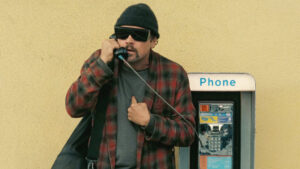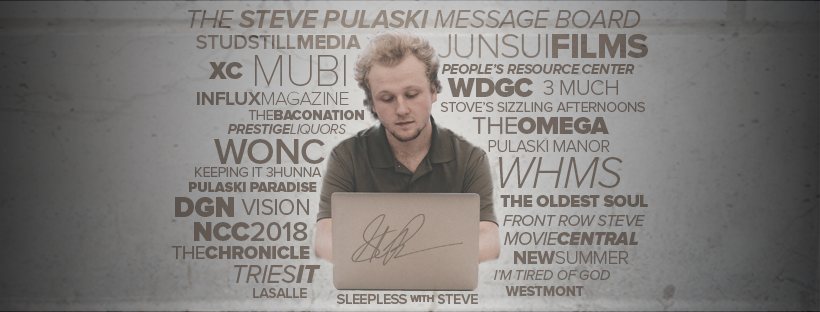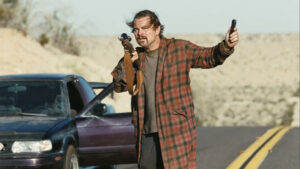Publication Date: 10-08-2025
One Battle After Another (2025) review
Dir. Paul Thomas Anderson
By: Steve Pulaski
Rating: ★★★
For decades, Paul Thomas Anderson has tried to will his film adaptation of Thomas Pynchon’s postmodern novel Vineland into existence. Pynchon’s work ambitiously sought to contextualize the radical changing of American politics and society from the 1960s through the 1980s, and such a compelling narrative canvas attracted Anderson, who, since he stormed onto the scene with Boogie Nights in 1997, has proudly resisted easy classification.
How much of Anderson’s One Battle After Another is actually faithful to Pynchon’s novel, I cannot say, but I presume it’s more of a thematic companion than a committed retelling. While it might not be very rare to see a noteworthy director allowed the creative freedom to deliver his nine-figure passion project after churning out multiple hits of varying size and caliber, a movie like One Battle After Another is for one big reason. Art that deals with political radicalization and extremism is generally not something that becomes mainstream, at least not until the weight of the present slowly descends into the distant past. Anderson’s expansive epic, which clocks in at just under three hours, coming with a $175 million price-tag makes it the most mainstream dramatization of political extremism in recent memory.

While not beholden to a specific period of time, nor too inextricably linked to our grim, cruel present ala Ari Aster’s Eddington, Anderson’s latest opens with a prologue that occurs 16 years before the primary story. The use of cell phones is the only element that suggests more contemporary times. Immediately, we’re dropped into the operations of a far-left domestic terrorist group known as the “French 75.” Belonging to the group is the couple of Perfidia Beverly Hills (Teyana Taylor) and her lover, “Ghetto” Bob Ferguson (Leonardo DiCaprio), who successfully free detained migrants from a California detention center, in large part thanks to Perfidia serving as a sexual distraction to the commanding officer, Steven Lockjaw (a magnetizing, evil turn from Sean Penn). Lockjaw is a steely eyed white supremacist, a member of a far-right group known as the “Christmas Adventurers,” comprised of major political players.
The mission is successful, and nine months later, Perfidia gives birth to a baby girl named Willa. Bob is perfectly content with settling down to raise Willa, but Perfidia shows no desire to slowdown on the activist front, a decision that proves costly when she’s arrested and forced to rate out her comrades.
16 years later, Bob is a pot-smoking manchild trying-yet-failing to raise Willa (Chase Infiniti). Bob has set up a strict set of rules for his daughter (who isn’t even allowed to have a phone), and his oppressive parenting has only made her grow more detached from him. Meanwhile, Lockjaw is offered a high-ranking role within the Christmas Adventurers hierarchy that requires some dirty work before he can slide into command. This involves the capturing and presumptive killing of both Bob and Willa, which sends them both on the run in opposite directions. By now, Bob has lost contact with most of the French 75 members, leaving only Deandra (Regina Hall), a close friend of Perfidia’s, and Willa’s sensei Sergio (Benicio del Toro) as voices he can trust.

Leonardo DiCaprio’s Bob is our gateway into this world of political crime, codewords, gamesmanship, and activism, but one of Anderson’s recurring strengths, regardless of period or setting, lies in making his settings feel vast and lived-in. Whether it’s the underbelly of the porn world, society amidst the California oil boom, or 1950s London, Anderson can take an extensive arena and populate it with individuals fleshed-out well enough to sustain long stretches of time. If One Battle After Another isn’t following Bob trying to recall vital confidential information in a weed-infused haze, it’s tracking Willa in her attempt to evade capture, or Lockjaw’s fight for power by any means necessary.
Similar to how Brad Pitt seemingly never found a way to leave the ultra-cool, impossibly handsome skin of Cliff Booth behind, Leonardo DiCaprio, now 50-years-old, channels a character Rick Dalton might’ve played in the 1960s. Fascinating is the case that DiCaprio, contrary to his colleagues around his age, has continued to portray looser, more volatile characters that are, in simplest terms, well-meaning yet bumbling. Beyond Once Upon a Time … in Hollywood, go back to Don’t Look Up, or as far back as The Wolf of Wall Street, which was a performance that felt like it was given by a man who lived life guided by his own id.
So, the character of Bob Ferguson continues DiCaprio’s trend of playing mangy, livewire personalities, but this time, a rarity: a father, a struggling one at that. Integral to Anderson’s story is the strained relationship between Bob and Willa. The film’s greatest achievement is its on-the-nose portrayal of a parent-child relationship that will never change. When you’re old, you have wisdom, but little willpower; when you’re young, you have willpower, but no wisdom. Together, if they met in the middle, Bob and Willa could do some real figurative and literal damage, but they’re constantly at odds due to Bob’s overbearing nature and Willa’s lack of emotional reassurance.

What captivated me the most about One Battle After Another admittedly exists as more of a backdrop to an intensely cinematic pastiche of action and thriller conventions. Those seeking another Phantom Thread or The Master from PTA are not going to find it here. Thanks to a couple of truly exhilarating, desert-set car chases, the film actually has a bit in common with 70s vehicular thrillers like Vanishing Point. Filmed in glorious VistaVision — a format which has seen a revival since last year’s The Brutalist — it’s not so much that One Battle After Another looks like a 70s flick so much so that it harbors a timeless quality in its narrative that makes the presentation feel germane with the subject matter.
Anderson’s tenth film remains propulsive to the point that its erratic pacing is undercut by its constant desire to push forward. Accomplished, multilayered sound design and a percussive score by Johnny Greenwood make for a symphony of aesthetics that keeps you at least in-tune despite an admittedly overlong runtime. Furthermore, a soundtrack that boasts both Steely Dan and Sheck Wes is basically bringing to life the two halves of my personality, so that must be credited as well.
Holding everything together is the characters, whom Anderson finds time to develop despite the constant movement. Walking away from One Battle After Another, you’re more likely to remember the individuals in the story and the dynamic performers who brought them to life, which, in its own right, is a challenging thing to overcome when you have domestic political turmoil at the center of a long, winding epic.
Starring: Leonardo DiCaprio, Chase Infiniti, Sean Penn, Benicio del Toro, Regina Hall, Teyana Taylor, Wood Harris, Alana Haim, Paul Grimstad, Shayna McHayle, and Tony Goldwyn. Directed by: Paul Thomas Anderson.
About Steve Pulaski
Steve Pulaski has been reviewing movies since 2009 for a barrage of different outlets. He graduated North Central College in 2018 and currently works as an on-air radio personality. He also hosts a weekly movie podcast called "Sleepless with Steve," dedicated to film and the film industry, on his YouTube channel. In addition to writing, he's a die-hard Chicago Bears fan and has two cats, appropriately named Siskel and Ebert!


